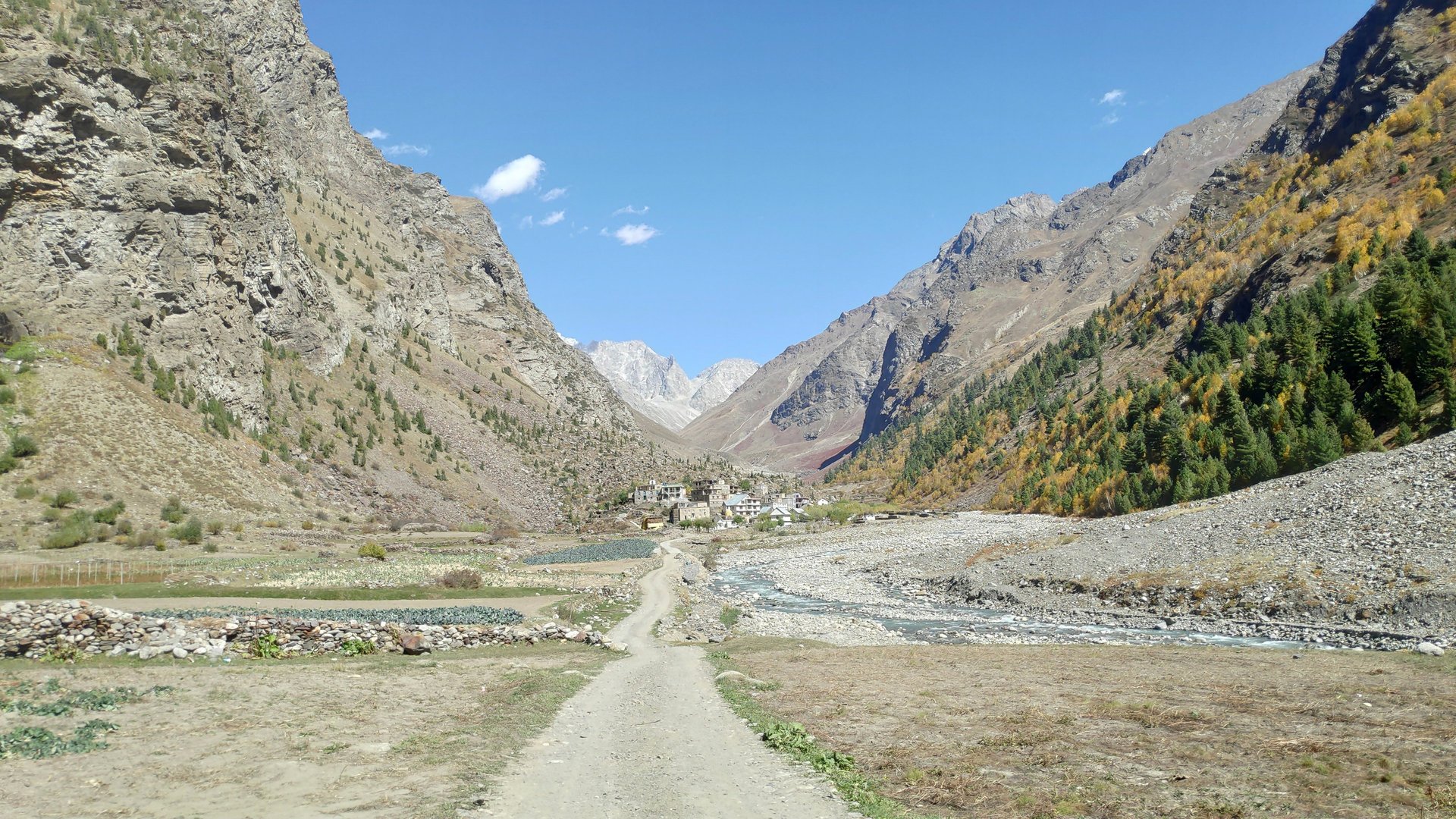
01.06.24
Lahaul and Spiti Mapping Exercise: Advancing Community Forest Resource Rights Through Data-Driven Mapping
The complex land tenure system in Lahaul and Spiti presents a significant challenge to securing Community Forest Resource Rights (CFRR) for forest-dependent communities. The absence of digitised land records, vast uninhabited areas, and overlapping jurisdictional boundaries have made it difficult to clearly demarcate CFRR claims.
To address these challenges, a systematic mapping exercise was undertaken in collaboration with local governance institutions and the Revenue and Forest Departments of Himachal Pradesh. The primary aim was to consolidate analogue cadastral maps, forest boundary maps, and historical land records into a structured digital format. This provides Gram Sabhas (GSs) with accurate spatial data to support their CFRR claims while streamlining the verification process for government agencies.
Phase I: Data Collection and Record Consolidation
The first phase of the exercise focused on compiling existing land records and identifying gaps in available datasets. Initial assessments revealed that, out of 521 villages listed in the Local Governance Directory (LGD), 262 were uninhabited. This indicated that approximately 200–220 GSs required mapping to enable the recognition of CFRR claims.
Key sources of information included:
Naksha Haq Bartan (NHB), which documents customary use and claims related to CFRR.
Wazib Ul Arz, which provides detailed accounts of historical community forest usage.
Cadastral maps for Dhars (pasturelands), Reserved Forests (RF), and Demarcated Protected Forests (DPF), which are essential for boundary delineation.
As digital cadastral records were incomplete, analogue maps had to be manually sourced from local revenue offices. The team engaged Patwaris (village-level land record officers) and Naib Tehsildars (Deputy Tehsildars) to verify village boundaries, segregate Khasra (land parcel) numbers, and cross-check changes in land use against Jamabandi (Record of Rights) records.
Parallel to these efforts, the Additional Deputy Commissioner (ADC) of Kaza provided a dedicated workspace at the Kaza Library to facilitate data processing. A progress tracker was also developed to monitor the digitisation of Dhar, RF, and DPF boundaries.
With a consolidated data framework in place, the mapping exercise transitioned to Phase II, focusing on field validation and the structured preparation of CFRR claims.
With historical records organised, Phase II focused on translating this data into spatially accurate CFRR claims. A standardised mapping approach was developed using three primary spatial layers:
Village boundaries were obtained from Survey of India (SOI) datasets.
Forest boundaries were derived from topographical sheets and validated through field verification.
Cadastral plots were linked to Khasra records for tenure authentication.
Due to the unavailability of BhuNaksha cadastral data for Spiti, an alternative verification method was used. Patwaris manually segregated land parcels panchayat-wise, ensuring that the mapped plots aligned with official records.
Field activities included several key steps:
Khasra numbers were identified for revenue villages and Dhars.
Field visits were conducted to validate existing records.
Boundaries were adjusted where land use had changed over time.
Following the successful mapping of Pangmo village, the process was expanded to Pin Valley, excluding Mud village, where the Spiti Civil Society (SCS) and Himdhara Environment Research and Action Collective were already working.
Community engagement was central to this phase. GS meetings were organised to raise awareness about CFRR claims, train local functionaries, and ensure that community knowledge was integrated into mapping decisions. Collaborations with Panchayat Secretaries and Forest Rights Committee (FRC) representatives helped refine the mapping methodology.
Phase II: Field Mapping and Ground-Truthing
The Lahaul and Spiti Mapping Exercise has laid the groundwork for accurate and evidence-based filing of CFRR claims. By consolidating historical land records, cadastral maps, and geospatial data, the exercise has created a replicable model for similar efforts in other regions.
The next steps aim to strengthen and scale up CFRR claim filing across the region:
Village-wise Khasra mapping will be finalised to establish clear land parcel boundaries.
CFRR claims will be expanded across additional GSs to ensure broader community coverage.
Mapping outputs will be integrated into formal processes to support the preparation, verification, and recognition of CFRR claims.
As the mapping process progresses, continued collaboration between government agencies, local communities, and civil society organisations (CSOs) will be essential in ensuring the successful recognition of CFRR in Lahaul and Spiti.
